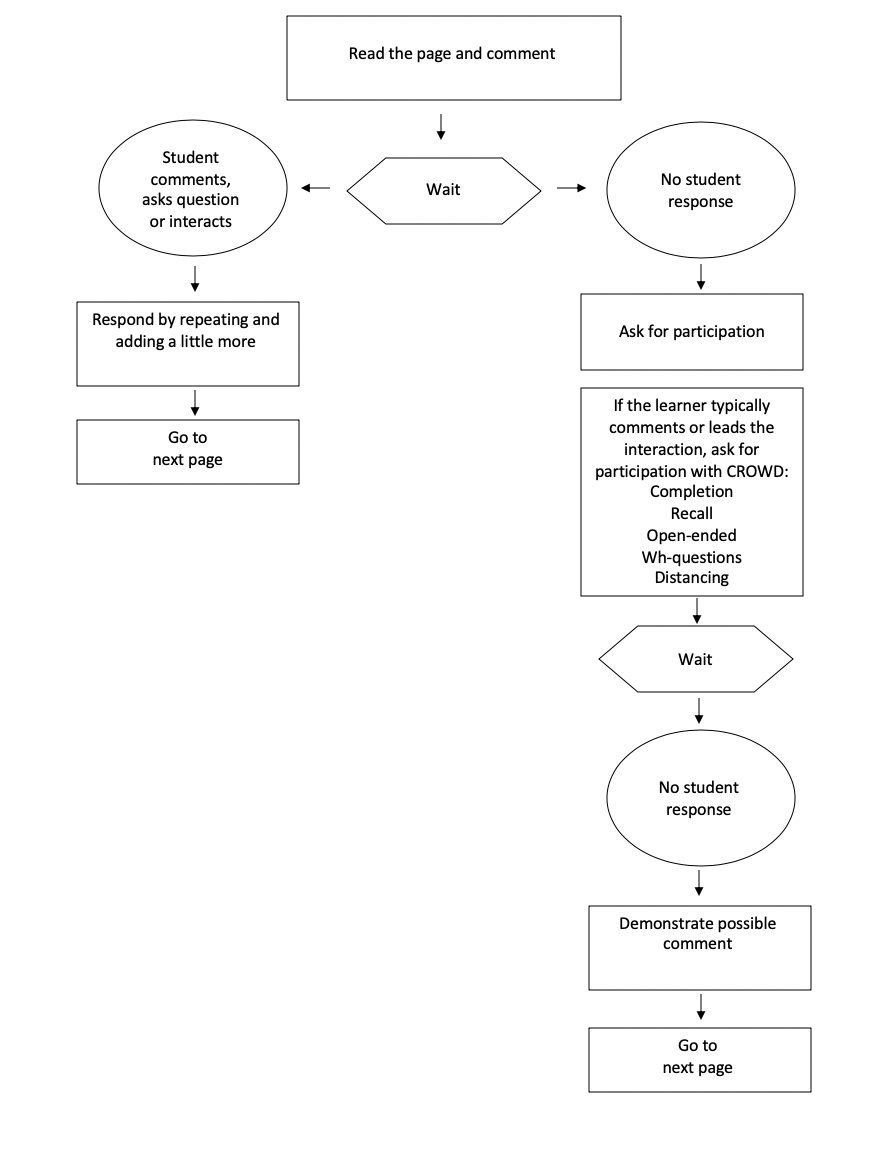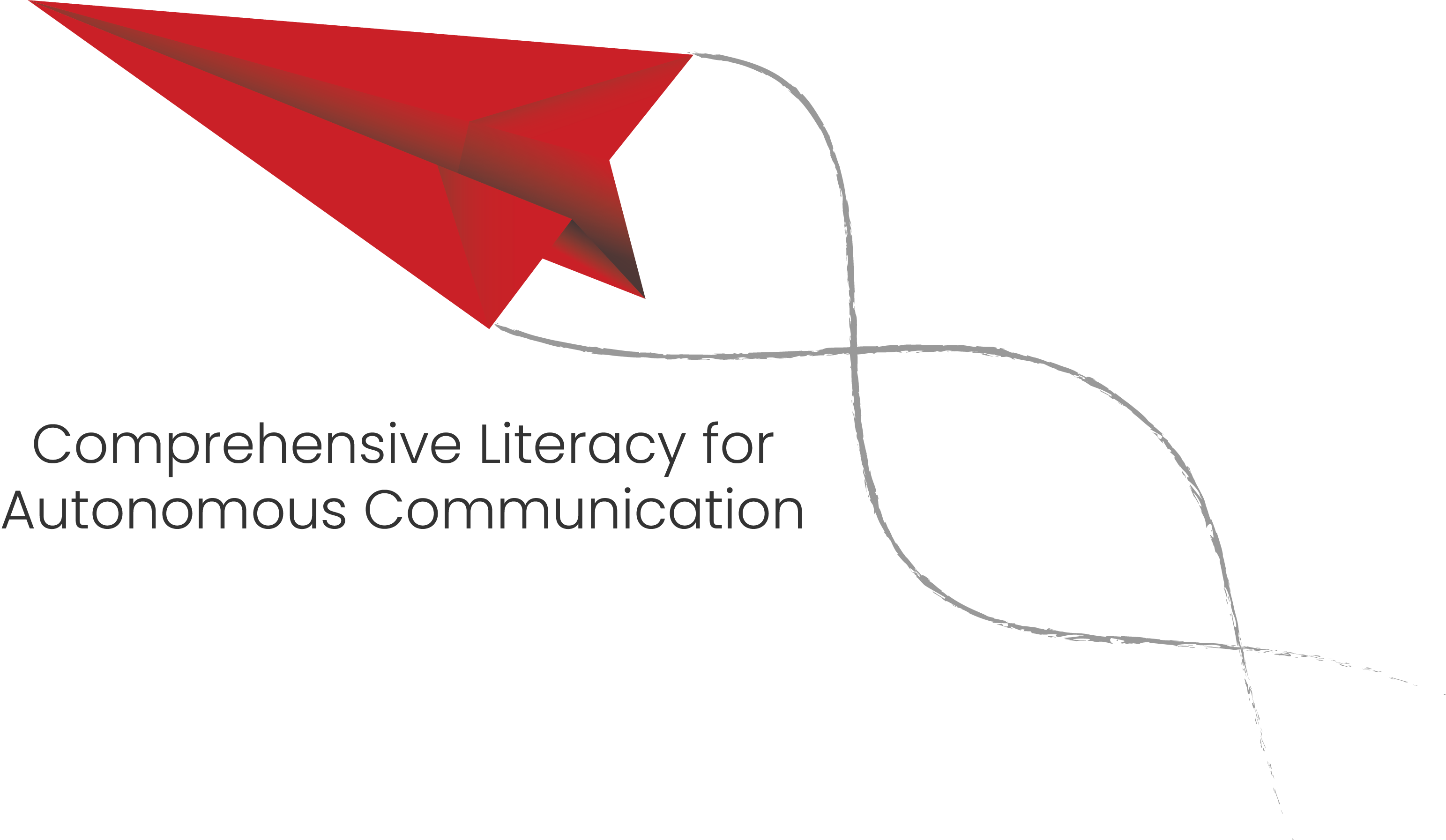Shared Reading
Description
Shared reading is an emergent literacy strategy from Dr. Karen Erickson and Dr. David Koppenhaver. It provides a structure to ensure that all learners have the opportunity to engage and actively participate in read alouds.
Why Try Something New?
It can be challenging to actively engage learners with complex communication needs during read alouds. Oftentimes these learners may be silent or appear disengaged. Shared reading provides educators with tools and strategies to engage all learners.
Who Would Benefit from Emergent Literacy Including Shared Reading?
Learners who benefit from shared reading do not yet:
- Know most of the letters most of the time
- Engage actively during read alouds
- Have a consistent means of communication and interaction
- Understand that writing involves letters and words
If you interact with emergent literacy learners, you can impact their literacy skills. Shared reading can be supported by families, caregivers, and educational staff including teachers, paraprofessionals, ancillary staff, and many more.
What Should an Emergent Reader Learn Through Shared Reading?
Shared reading focuses on the interaction between the communication partner and the learner. Through this shared interaction and other emergent literacy instruction, emergent readers
- Learn why we read
- Build background knowledge and concepts
- Develop an understanding of concepts about print such as text carries meaning, how we read a book, etc.
- Learn to identify some letter names and sounds
- Develop a desire to learn to read and a love of reading and books
How Do I Maximize Interactions During Shared Reading?
Communication partners can maximize interactions by making connections to information that the learner is familiar with and “follow the CAR”:
- Comment (not ask questions) using 2-3 core vocabulary words and then wait for a response (this may take 15-30+ seconds).
- Ask for participation with requests such as "tell me" while you gesture toward their communication system. You can also repeat your initial comment and then wait (at least 10-15 seconds).
- Respond by repeating the learner's response and adding something new. Wait (at least 10-15 seconds) to allow them to communicate something new and then move on.
As learners begin to lead the interaction, we add the CROWD prompts during the "ask" step. CROWD is beneficial when the learner does not independently respond. The communication partner uses the following strategies:
- Completion - Starts a repeated line, allowing the learner to finish.
- Recall - Talks or asks about what has already happened in the text.
- Open-ended - Asks an open-ended question.
- Wh - Asks wh-questions related to the pictures, story, or characters.
- Distancing - Relates the text to the learner's life

As a Teacher, How Do I Support Shared Reading During Distance Learning?
Distance learning has provided a great opportunity to partner with families and caregivers. To support families during distance learning, educational staff can:
- Share videos of themselves during shared reading of familiar texts with families/caregivers.
Share simple "how to" videos with families/caregivers in which they demonstrate the strategies of shared reading. See this brief Shared Reading Demo for Parents video of Audrey McBride, an SXI teacher at Bay-Arenac ISD explaining shared reading for families and caregivers.
Selecting Texts for Shared Reading
When selecting texts for shared reading consider:
- Learner interests
- Previous experiences or background knowledge
- Length and language complexity of the text
The following resources may assist in the creation of a diverse collection of texts, genres and interests:
- Tar Heel Reader
- Shared Reader
- Unite for Literacy
- Storyline Online
- Second-hand shops
- Libraries
- Sports cards
- Maps
- Comics
- Newspapers
- Magazines
Where Can I Find More Information about Shared Reading?
Tar Heel Shared Reader offers supporting research, professional training modules, planning materials, and access to free, accessible books on a variety of topics with suggested comments. Project-Core also offers a module on Shared Reading. If you would like to learn more about using CAR during shared reading, check out the Follow the CAR module from Tar Heel Shared Reader.
